“Just like I am genderless, I am also genreless—in a constant fluid flux.”
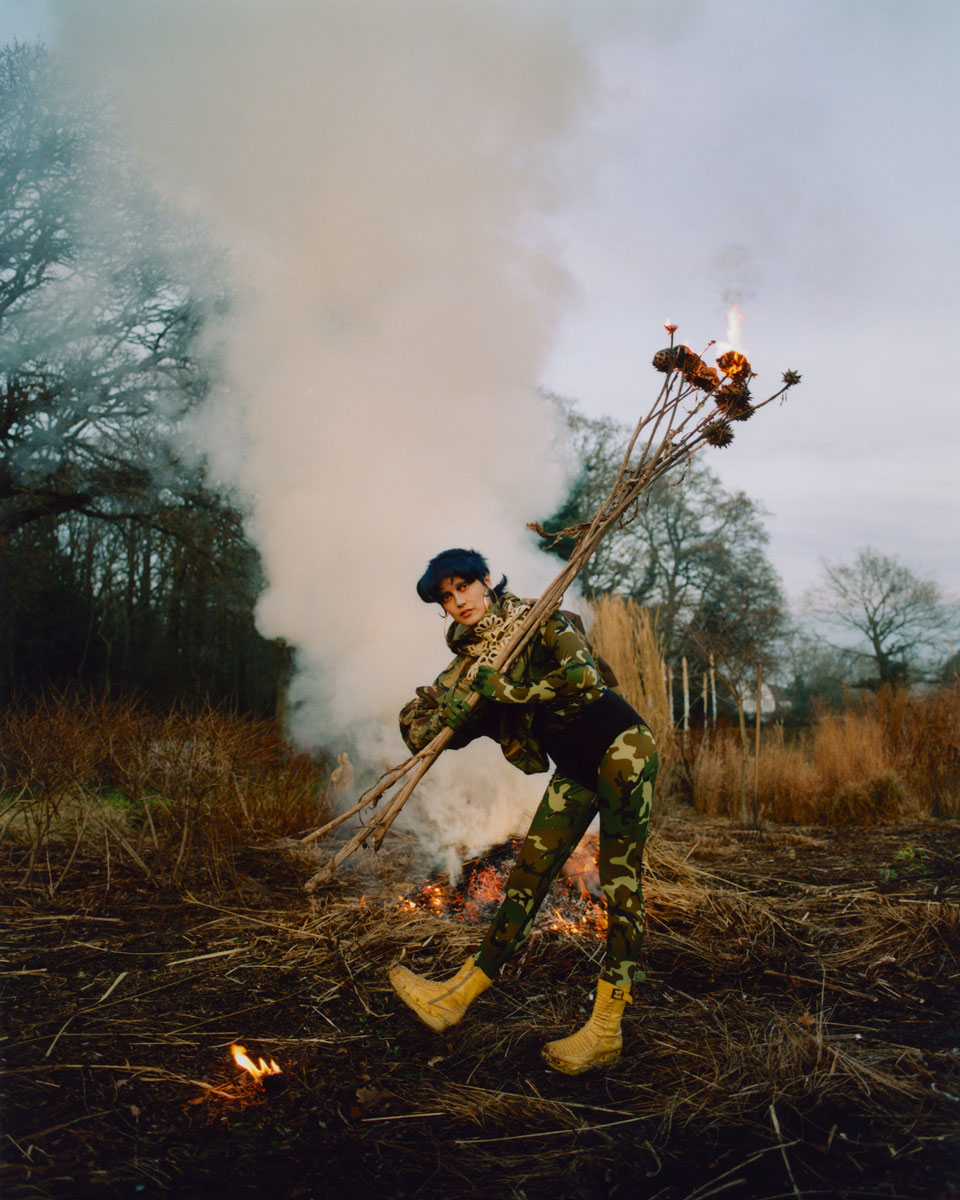
Sticks and stones may break bones, yet for YAYA BONES (aka Ayesha Tan Jones) these are mortal instruments to combat all things loveless and socially constructed. Previously, they were probing social and environmental issues through installation, sculptures and performances under the Brownie Promise, Una Jynxx and Indigo Zoom monikers. A contemporary witch, today YaYa Bones sing “non-binary love songs” and “dance floor protest anthems”, fusing their own genre—”dream ’n’ bass’”—to avoid being categorized. Alongside music and art, YaYa run the Shadow Sistxrs Fight Club, focusing on a “holistic approach to self-defence” to share the wisdom of collective healing. Joining forces with photographer Eleanor Hardwick, Glamcult got in touch with YaYa to chat about art education, queer science fiction and contemporary (witch)craft.
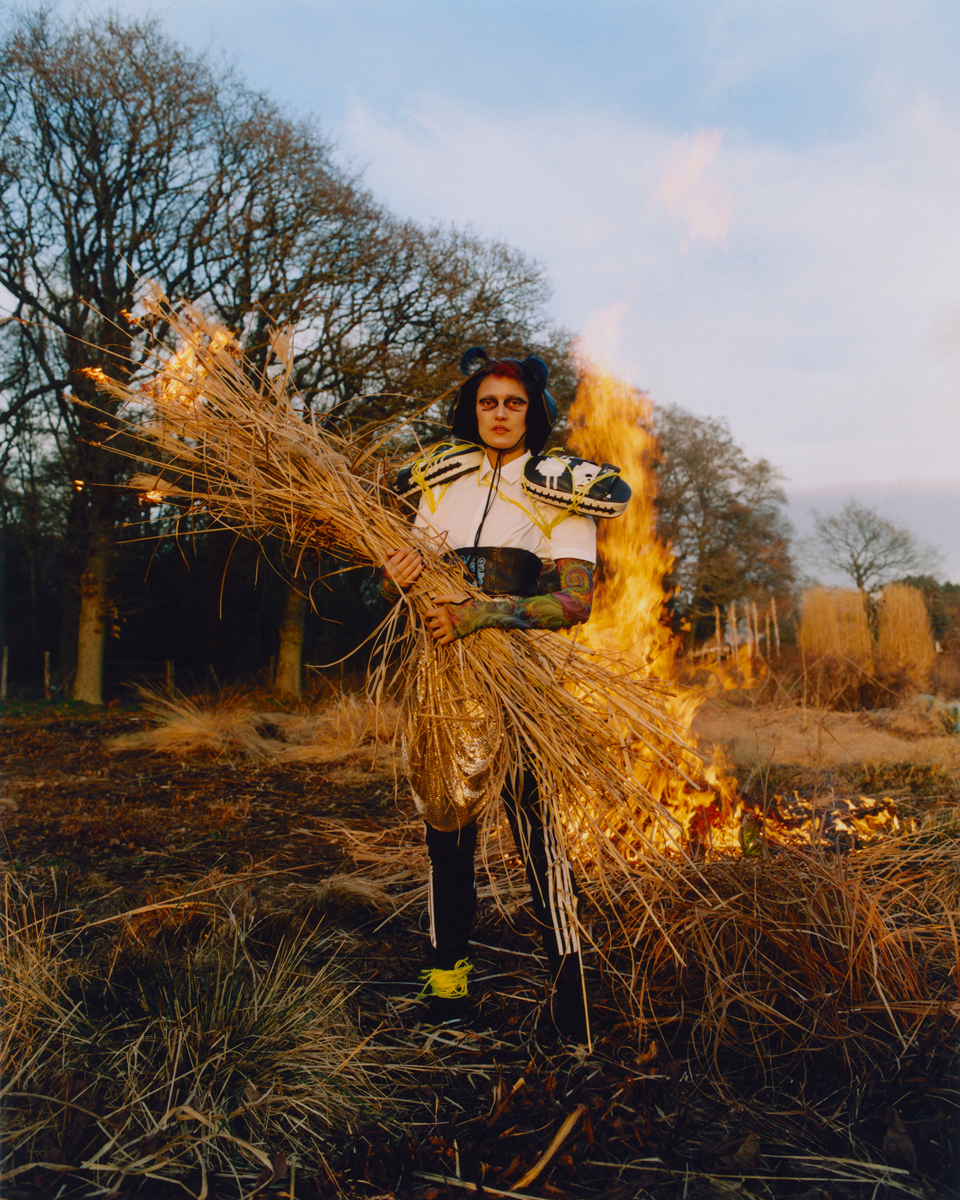
You’ve been described as a witch, artist, model, filmmaker, musician… the list goes on. However, how would you describe the essence of YaYa Bones?
Yes, I guess I am all of those things! I see my output of creations as part of a larger ‘craft’, which encapsulates my spiritual work within my artistic work, as to me they are all part of the same journey. YaYa Bones has become a musical vessel for me to explore this aspect of the craft. I sing non-binary love songs, dance floor protest anthems, and write laments to the death of the anthropocene. YaYa Bones, which is an amalgamation of my two childhood nicknames, has become a sonic space for me to re-connect with ancient parts of myself. I wanted to combine my classical musical training with my love for experimental and electronic music. I am moved by opera, it hits my soul deeply, and has its roots in both China and the West, yet the thumping bass sounds of drum’n’bass and trip-hop beats make my root chakras dance in an earthing symphony.
You’re originally from the North. How did it feel to leave leafy Cheshire and move to the London smog?
Growing up in Chester I was very aware of the idyllic bubble that I existed in. I was in a band with my two best friends, and we would spend most days in a damp basement, writing teenage heartache songs on crappy equipment, with the occasional gig in the local pub. We were always craving to leave, outgrowing the small town life quickly, spending our weekends sneaking off to Manchester and Liverpool. As I got older I’d get the train down to London and meet up with friends from Myspace and Flickr, the Internet is a place of solace when you’re a weirdo growing up in a small town. So when I eventually moved to London at 17 to study art, it was like all my dreams and visions of what my life could be like had become reality. I took every moment like a blessing, because it truly felt like one. The city became my playground, everyday was a new quest, with new experiences around each street corner. Another aspect of my life, which evolved upon moving to London, was being surrounded by more people of colour, people who shared a cultural heritage with me. I had never met another Ayesha in my life before I’d moved to London, and then I met a dozen people with my name! All around me I could sense a kinship with other Asians, I met other young people who were dealing with a similar feeling of diaspora, mixed race confusions and cultural yearnings. Although I continually crave to be enveloped by leafy green lushness, fresh air and quiet, the other things that the big polluted city has to offer; queer community, communities of colour, artistic freedom, are equally vital forms of oxygen for me.
Did this transition in environments perhaps inspire your film, Indigo Zoom?
Indigo Zoom came about during a time when I was feeling increasingly suffocated by London. I kept blaming it on the physical or the spiritual, but soon also became aware of the real science that the air I was breathing was actually toxic. I did yearn to breathe free, and that became the quest of the protagonist in the film.
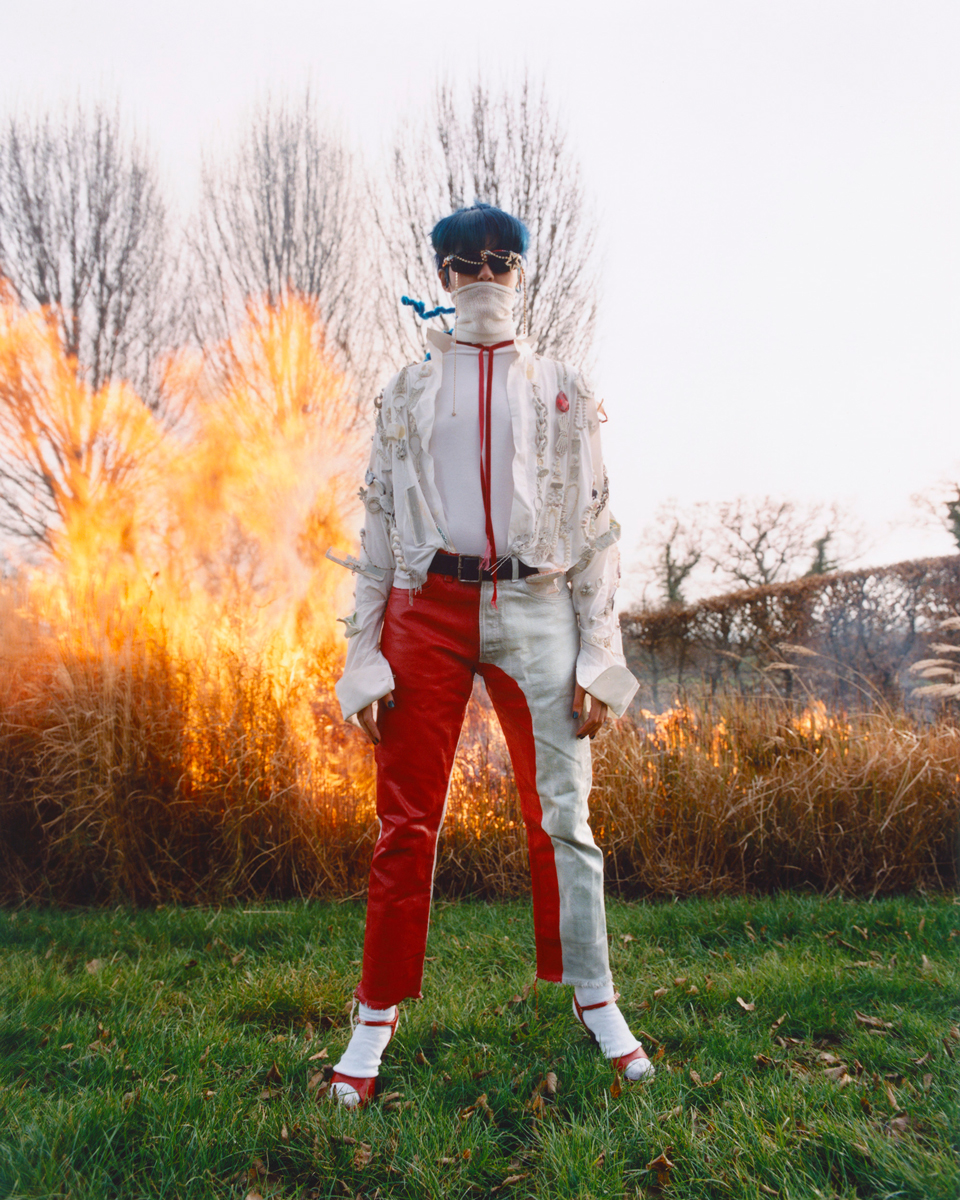
And did producing such a film make the impact you desired?
My intentions were to raise awareness of climate change and specifically the toxic levels of air pollution in big cities like London. I hope that the film reached audiences further than the art circles and communities that are often already well versed in climate change. Screening it at Somerset House in 2018 for Earth Day was amazing, as there was a hugely diverse audience that came throughout the day, and I ran a workshop responding to the film, where participants could make their own herbal air purifying spray. The film acted as a cathartic process to explore these tensions within myself, using ‘breathing free’ as a metaphor for a spiritual journey. I wanted to use fantasy and humour to convey these important messages while avoiding becoming preachy. I think science fiction/speculative fiction is a really incredible tool for this: envisioning futures/alternative worlds where we can play out potential scenarios through stories and see what works and what kind of future is sustainable. I would like to expand on the work, delve deeper into the story, and connect it with all my other characters and projects, including the operatics of YaYa Bones. So stay tuned for the sequel, a climate apocalypse opera set in a queer, mystical future.
How did studying Fine Art affect your style and ethos? How has your vision evolved during/since being at university?
At A-Level, I had an art teacher who sadly passed away that same year, Mrs Latham. She was such an amazing woman, with no filter, she really said things how it is! She once said to me, “Ayesha, what do you want to do with your life?” I said “Be an artist”, and she replied, jokingly with a tone of relief “Good, because I really can’t imagine you could do anything else!”
I remember craving a time when all I had to do was dedicate my time to art, and no other subjects that bored me. Going into CSM felt like indulgence, having the facilities to create anything I could imagine at my disposal, being surrounded by hundreds of other like-minded individuals all in this space to create their visions. But being in a city full of artists truly awakened me to the understanding that you must dedicate your life to your vision. Understandably, I entered my art studies with naivety and a lust for creation. I wanted to share my deepest darkest feelings with the world through my sculptures, my films, and subsequently, each university crit felt like an interrogation of my soul, when class mates would critique my use of imagery, or material, or sound, when all I wanted was for them to feel how I felt! This was definitely a turning point for me, and I remember leaving one crit crying after showing a film I made called Most of your pain is self-inflicted (LOL, emo, I know!). From that point on, I used alter egos and characters to explore these feelings, and thus, Una Jynxx was born, followed by Indigo Zoom, and so it continues!
Is your artwork created in an environmentally friendly way?
In recent years, my work has environment and sustainability at the forefront. I forage for materials in the woods and fields, using tree branches and scrap metals, stones and herbs, and combining these with single use plastics, reforming them with heat, and obsolete electronics, another main material I use in my work, such as broken charging cables, smashed iPhones, circuit boards, the inner workings of devices. I use latex quite often, which is derived from the rubber tree. I am phasing out the use of crystals in my sculpture work and spiritual practice, as I am becoming more concerned of the environmental impact that crystal mining has on the planet. I encourage all healing crystal users to do their own research into this, and make their own informed decisions on whether healing crystals are actually beneficial to their spiritual practice. Some people say I should make sculptures that withstand the weather, but I think it is a beautiful collaboration with time and weather to let my sculptures biodegrade and transform as they decay.
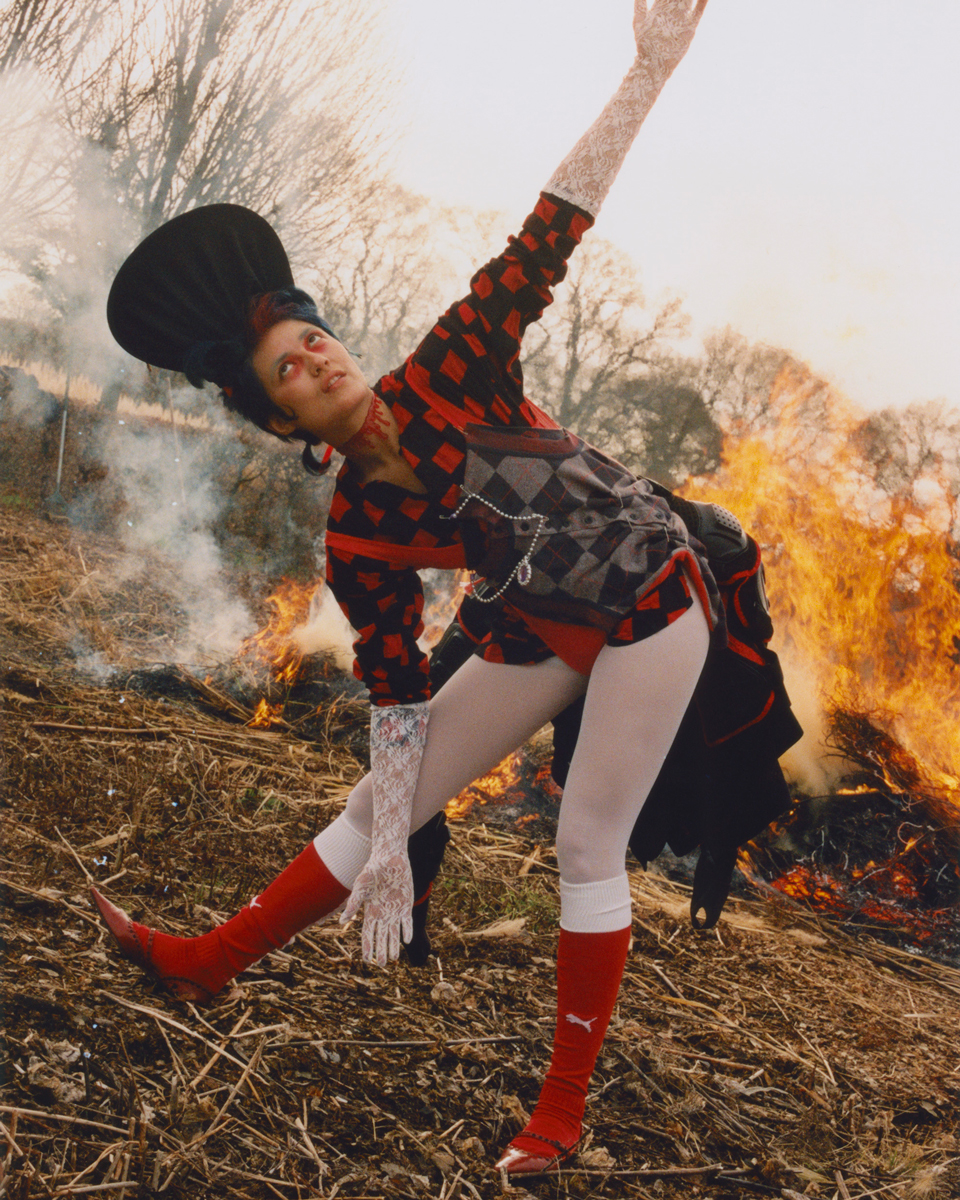
What made you decide to expand your performative talents to music?
I have always had a musical practice, writing music since I was a kid and being in multiple bands. I kind of put it on halt when I first moved to London, my keyboard became a clothes rail in my uni halls bedroom, I forgot I even had it. One day I wanted a soundtrack to a film I was making, and I could never let myself use anyone else’s music to my creations, so the keyboard was dusted off, and my relationship with writing music began again. My first solo project was Brownie Promise, and I performed under that name from 2011 in London and across the UK, but put BP to rest in 2015. I didn’t resonate with the sound anymore; it had done its job, allowed me to work through those feelings through sound. I began collaborating with my then partner Tex Royale, we would improvise for hours on end with a twinkling setup of synths and drum machines, and we would go on epic sound journeys together. It is then when I started using my childhood operatic training and fusing it with heavy techno beats and freestyle poetry and any other strange sounds we could think of. The project, Heavy Breath, is still ongoing—although I am not at the core of it any more, the members are fluid and each performance is improvised and transcendental. From Heavy Breath, I pokevolved to YaYa Bones, and it is in YaYa Bones that I am truly realising a sound that feels important to me.
You’ve conceived your own genre: “dream ’n’ bass”. Can you elaborate on what this entails? Does anybody else in the music game embody this genre?
Dream ’n’ bass is like drum ’n’ bass, except filtered through a lens of soft radical tenderness, astral projected visions and fluid frequencies. I coined this term to describe my music as I didn’t want to fit into any one box, just like I am genderless, I am also genreless, in constant fluid flux.
In the chorus of Grandchildren one of your lyrics is, “We are the grandchildren of the witches you failed to burn”. How would you define being a 21st-century witch?
[Warning: sensitive content!] In short, to me, being a witch is taking responsibility for your actions, and understanding the cycle of energies that are constantly turning. This could be as small as being aware of how your mood and thoughts affect your daily life, or being conscious of the planets, moon and stars, and living in right relationship with the land around you. It is using your innate inner power, which we are all born with, to help heal yourself, and others, which is vital in today’s climate, where we are often schooled to ignore our intuition and are not taught the names of healing plants that grow abundantly around us. In the West we are able to reclaim the word ‘witch’, which was taken from us during the Medieval Witch craze, and a lot of people, especially queer people, find power and strength in this identity. However it is important to acknowledge that there are still women around the world, such as Gujarat, India, being accused of witchcraft and being hunted and stoned for being in touch with this power, and these accusations are deeply rooted in superstitions and systems built on misogyny and patriarchy.
Tell us about your fight club. Who’s it for and what does it advocate?
Shadow Sistxrs Fight Club is a self-defence class I facilitate with my collaborator Monique Etienne. We focus on a holistic approach to self-defence, combining Brazilian JuJitsu with meditation, magic, and medicinal herbalism. Our classes began as donation classes for women, non-binary people and trans folks, prioritizing PoC. We facilitate a space where people can learn self-defence in a non-judgmental and nourishing environment, encouraging the sharing of wisdom for collective healing. Self-defence is not just a physical act, it must be practiced metaphysically too, which is why we encourage the connection to herbal healing and breath work, empowering yourself with techniques to practice self-protection in your everyday life.
Community seems to be an integral part of your work. Who inspires you in your daily life? What types of spirits do you like to surround yourself with?
I feel blessed to have such an incredibly supportive community around me! The people I am lucky enough to call my chosen family are incredible artists, poets, witches, activists and club night facilitators. I am drawn to people who have a vision to create change in their surroundings, and spaces like Pxssy Palace and BBZ, which are incredible QTIPOC / QTIBPOC club nights run by my friends, are spaces that are really putting the work in to envision brave and safer spaces for the community. I literally could write a whole essay about how incredibly talented and special my friends and chosen family are, how I am inspired by their visions daily, how each interaction can become a place of evolution, healing and learning more about each other and ourselves as we continue to challenge each other, hold space for each other’s vulnerabilities, enact intimate tenderness through platonic love. At the moment, Scorpio signs are really teaching me and throwing up mirrors to my soul (I’m Scorpio rising) and to them I am so grateful! Shout out to Tiffany Chan, my clan member, and triple Scorpio, Annabelle Sami, part time shadow sistxr facilitator, childrens book author and on Saxophone goddess in my upcoming single Tender Muscles. My coven, you know who you are. I love you.
How does YaYa Bones cope with the summer blaze? (Do witches melt in water?)
As I write this I’m in my motherland, Malaysia, the heat here is wild and humid I am actually melting, but it feels good to sweat. Skateboarding out here is another level of melt. Most summers in London I find myself drifting between the studio, the skatepark, and Hampstead ponds. Swimming in nature’s waters is the most healing. Witches don’t melt in water, we thrive in water!
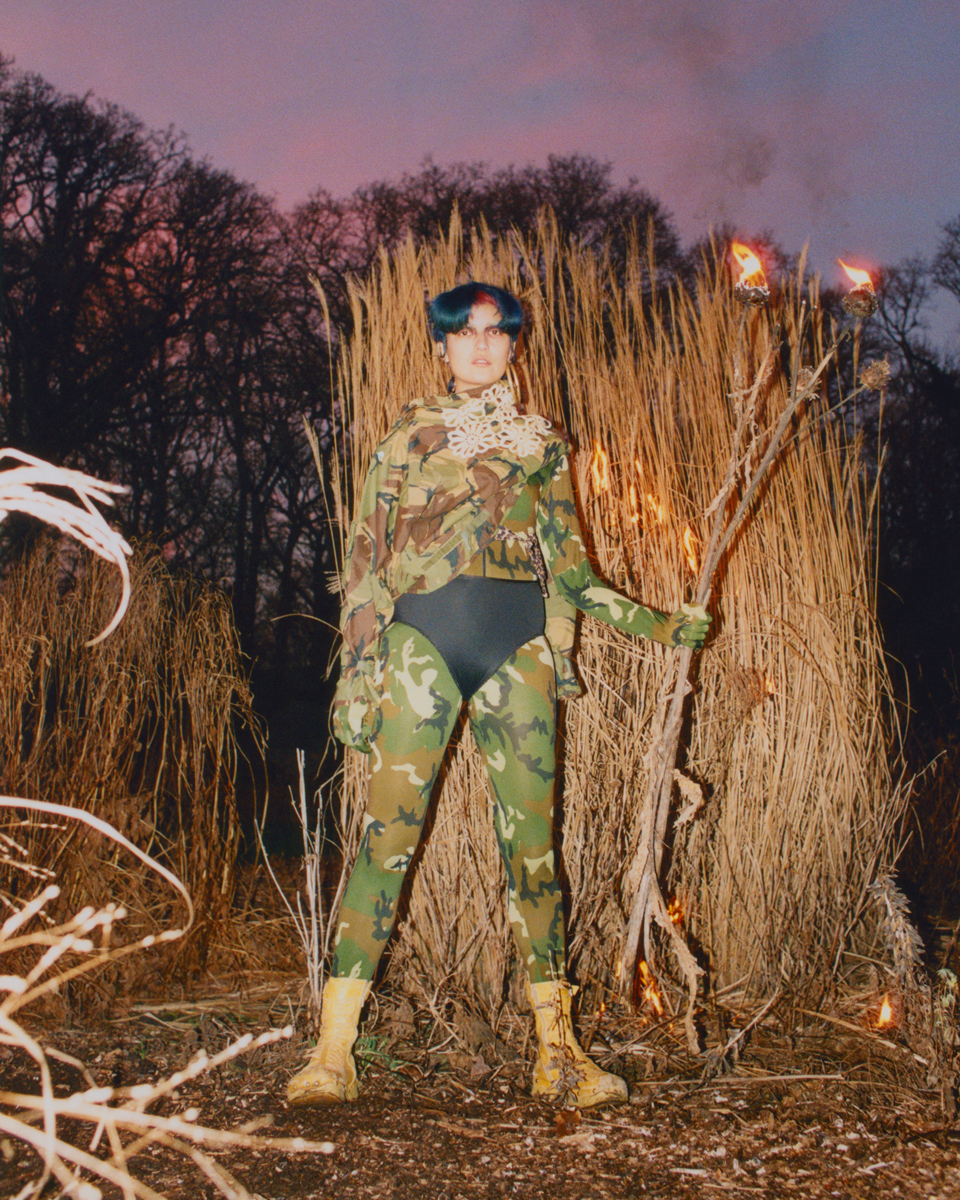
Words by Lawrence Harrison
Photography by Eleanor Hardwick
Styling by Neesha Tulsi Champaneria
With special thanks to Sussex Prairie Gardens
Follow YaYa Bones on Instagram and Soundcloud